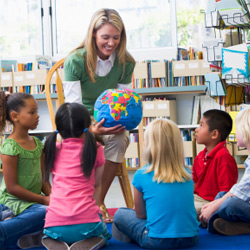Differentiated Learning

“What we call differentiation is not a recipe for teaching. It is not an
instructional strategy. It is not what a teacher does when he or she
has time. It is a way of thinking about teaching and learning.
It is a philosophy.” Carol Ann Tomlinson (2000)
Not all students learn at the same pace, have the same interests, or the same learning styles. Students are individuals and each has his or her own learning needs.
As Jeannette Della Vedova (2002) noted,
In an ideal world of teaching, all students in a particular grade would be at the same level. Classrooms would consist of students with similar intellectual and emotional capabilities and cultural similarities. But in the real world this type of classroom does not exist. Instead, teachers must deal with students who are all in the same grade, but who are at various levels of intellectual and emotional development and who also vary in regards to cultural differences and language... It is the job of the teacher to balance all these various levels of learning.
Differentiated instruction is a learner-centered approach to teaching that enables teachers to balance learners' needs while providing successful learning opportunities for all students. The goal of differentiated instruction is to engage students in their own learning, rather than treating them as passive recipients. To do this, teachers create a learning environment that celebrates individual differences and uses these differences to create learning experiences where the students share individual interests. The teacher’s focus of instruction shifts away from delivering information and moves toward organizing learning experiences. Research shows the most effective teachers function more as facilitators and coaches than as lecturers and direction-givers, particularly in the upper grades (Bolliger, 2004; McCain, 2005).
